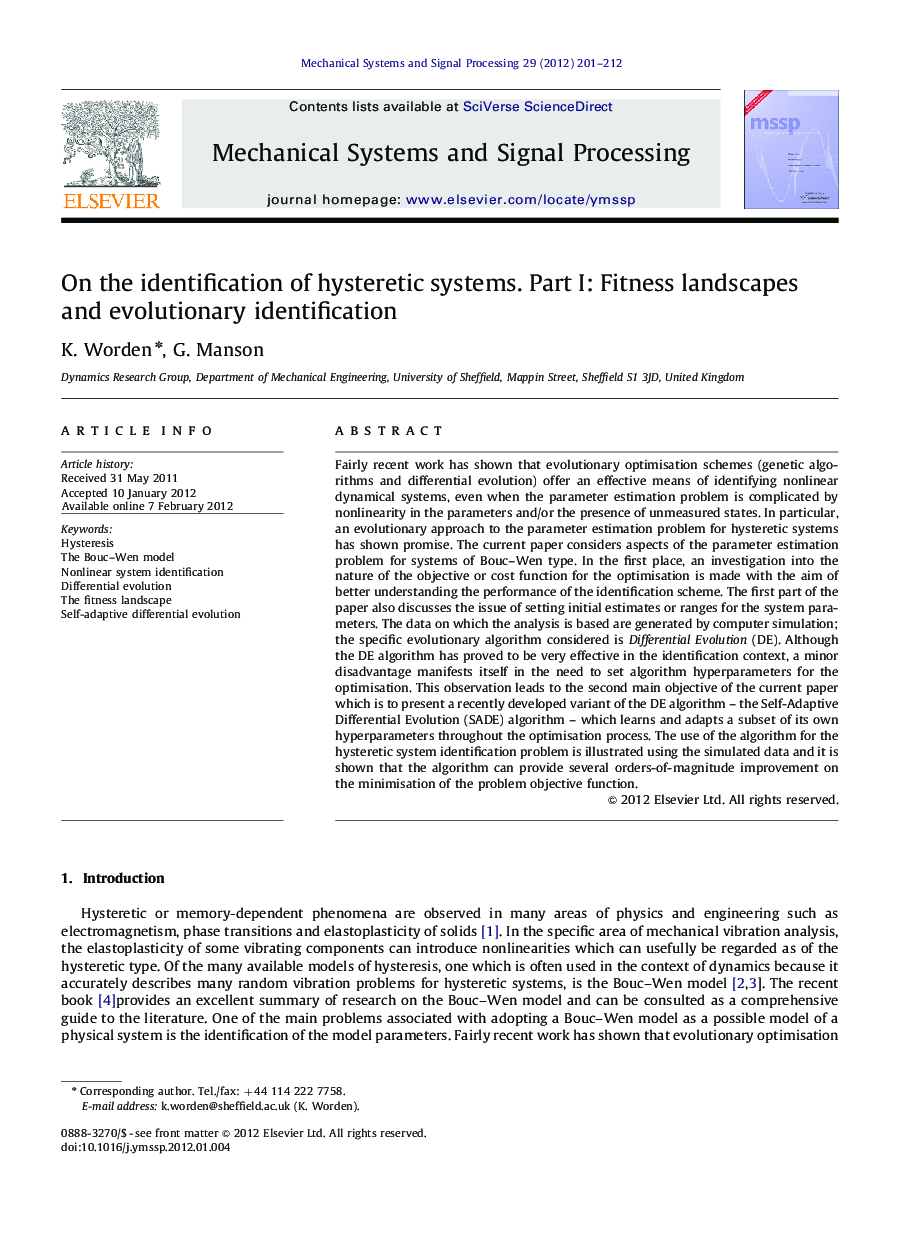| کد مقاله | کد نشریه | سال انتشار | مقاله انگلیسی | نسخه تمام متن |
|---|---|---|---|---|
| 561464 | 1451886 | 2012 | 12 صفحه PDF | دانلود رایگان |

Fairly recent work has shown that evolutionary optimisation schemes (genetic algorithms and differential evolution) offer an effective means of identifying nonlinear dynamical systems, even when the parameter estimation problem is complicated by nonlinearity in the parameters and/or the presence of unmeasured states. In particular, an evolutionary approach to the parameter estimation problem for hysteretic systems has shown promise. The current paper considers aspects of the parameter estimation problem for systems of Bouc–Wen type. In the first place, an investigation into the nature of the objective or cost function for the optimisation is made with the aim of better understanding the performance of the identification scheme. The first part of the paper also discusses the issue of setting initial estimates or ranges for the system parameters. The data on which the analysis is based are generated by computer simulation; the specific evolutionary algorithm considered is Differential Evolution (DE). Although the DE algorithm has proved to be very effective in the identification context, a minor disadvantage manifests itself in the need to set algorithm hyperparameters for the optimisation. This observation leads to the second main objective of the current paper which is to present a recently developed variant of the DE algorithm – the Self-Adaptive Differential Evolution (SADE) algorithm – which learns and adapts a subset of its own hyperparameters throughout the optimisation process. The use of the algorithm for the hysteretic system identification problem is illustrated using the simulated data and it is shown that the algorithm can provide several orders-of-magnitude improvement on the minimisation of the problem objective function.
► Definition of fitness visualisation scheme for system identification.
► Suggestion for a means of setting initial conditions for optimisation.
► Demonstration of self-adaptive DE for an identification problem.
Journal: Mechanical Systems and Signal Processing - Volume 29, May 2012, Pages 201–212